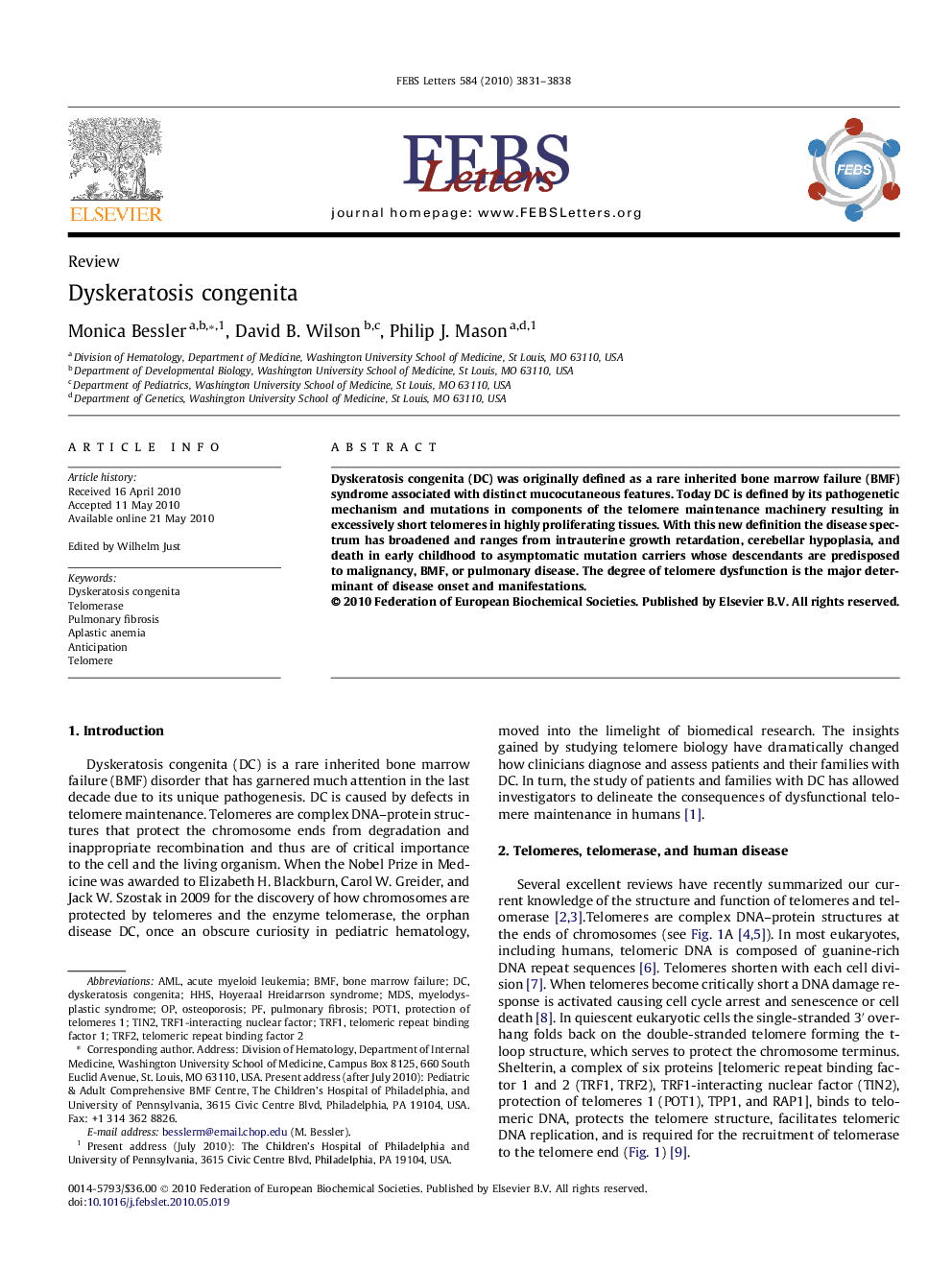| Article ID | Journal | Published Year | Pages | File Type |
|---|---|---|---|---|
| 10871841 | FEBS Letters | 2010 | 8 Pages |
Abstract
Dyskeratosis congenita (DC) was originally defined as a rare inherited bone marrow failure (BMF) syndrome associated with distinct mucocutaneous features. Today DC is defined by its pathogenetic mechanism and mutations in components of the telomere maintenance machinery resulting in excessively short telomeres in highly proliferating tissues. With this new definition the disease spectrum has broadened and ranges from intrauterine growth retardation, cerebellar hypoplasia, and death in early childhood to asymptomatic mutation carriers whose descendants are predisposed to malignancy, BMF, or pulmonary disease. The degree of telomere dysfunction is the major determinant of disease onset and manifestations.
Keywords
Related Topics
Life Sciences
Agricultural and Biological Sciences
Plant Science
Authors
Monica Bessler, David B. Wilson, Philip J. Mason,
